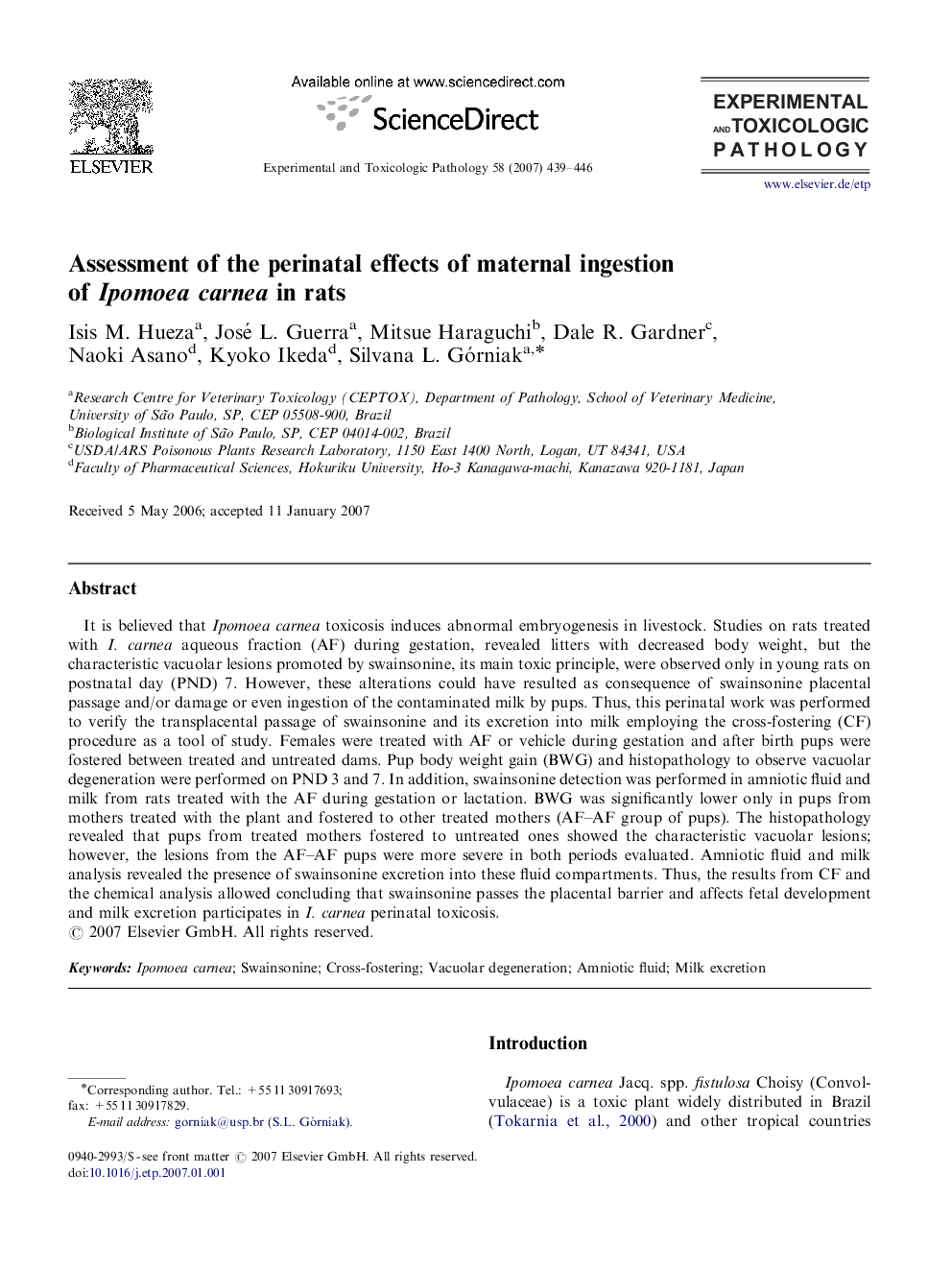| Article ID | Journal | Published Year | Pages | File Type |
|---|---|---|---|---|
| 2499442 | Experimental and Toxicologic Pathology | 2007 | 8 Pages |
It is believed that Ipomoea carnea toxicosis induces abnormal embryogenesis in livestock. Studies on rats treated with I. carnea aqueous fraction (AF) during gestation, revealed litters with decreased body weight, but the characteristic vacuolar lesions promoted by swainsonine, its main toxic principle, were observed only in young rats on postnatal day (PND) 7. However, these alterations could have resulted as consequence of swainsonine placental passage and/or damage or even ingestion of the contaminated milk by pups. Thus, this perinatal work was performed to verify the transplacental passage of swainsonine and its excretion into milk employing the cross-fostering (CF) procedure as a tool of study. Females were treated with AF or vehicle during gestation and after birth pups were fostered between treated and untreated dams. Pup body weight gain (BWG) and histopathology to observe vacuolar degeneration were performed on PND 3 and 7. In addition, swainsonine detection was performed in amniotic fluid and milk from rats treated with the AF during gestation or lactation. BWG was significantly lower only in pups from mothers treated with the plant and fostered to other treated mothers (AF–AF group of pups). The histopathology revealed that pups from treated mothers fostered to untreated ones showed the characteristic vacuolar lesions; however, the lesions from the AF–AF pups were more severe in both periods evaluated. Amniotic fluid and milk analysis revealed the presence of swainsonine excretion into these fluid compartments. Thus, the results from CF and the chemical analysis allowed concluding that swainsonine passes the placental barrier and affects fetal development and milk excretion participates in I. carnea perinatal toxicosis.
